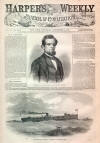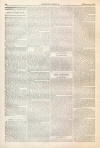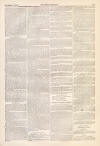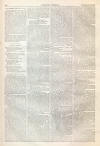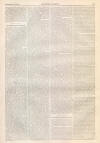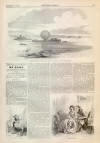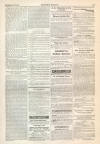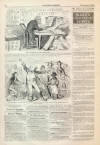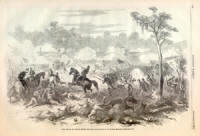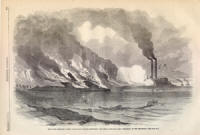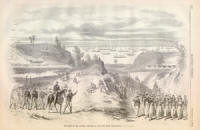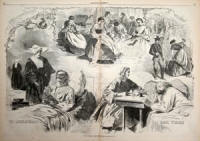Civil War Iron Clad
|
|
This Site:
|
VOL. VI.—No. 297.] NEW YORK, SATURDAY, SEPTEMBER 6, 1862. [SINGLE COPIES SIX CENTS. $2 50 PER YEAR IN ADVANCE.
Entered according to Act of Congress, in the Year 1862, by Harper & Brothers, in the Clerk's Office of the District Court for the Southern District of New York. THOMAS FITCH ROWLAND ESQ., BUILDER OF THE NEW MONITORS.MR. T. F. ROWLAND.WE publish on this page a portrait of Mr. THOMAS FITCH ROWLAND, who is building most of the new Monitors and turrets. Mr. Rowland was born at New Haven, Connecticut, on March 15, 1831, and is consequently thirty-one years of age. While yet a boy he drove an engine on the New Haven Railroad ; and subsequently, on the occasion of some great racing which took place on the Sound boats, he became an engineer on board of one of them. Feeling, however, that he was fit for something better than driving an engine, he entered the Allaire Works in this city as an apprentice some ten years ago. In that extensive establishment he found free scope for his ability, and after two years' work in the shop and two more years in the drawing-room he became Superintending Engineer. Under his superintendence the engines of the Harriet Lane and several other well-known vessels were built. In the year 1859 Mr. Rowland took a ship-yard at Greenpoint, Long Island, and commenced the construction of iron vessels. He built several well-known vessels, and took a high stand among shipbuilders. When the war broke out business came to Mr. Rowland with a rush. He prepared several of the vessels employed on the Hilton Head expedition, and likewise the mortar-schooners which sailed under Commodore Porter. It was he who built, under Captain Ericsson's supervision, the first Monitor. He is now engaged in building three of the new 200 feet Monitors, and, as soon as room can be found in his ship-yard, will commence the construction of the great Monitor Puritan. which is to be 340 feet long. Mr. Rowland is building, besides these vessels, three turrets for Monitors whose hulls are being constructed elsewhere. Dr. Rowland commenced life as a poor boy, and never had any help from any one but himself. His own industry and energy have raised him to the proud position which he occupies. His career contains a useful lesson for young men. THE " IRONSIDES."WE publish herewith a picture of the IRON-CLAD FRIGATE " IRONSIDES" IN FIGHTING TRIM. She left Philadelphia on 23d with sealed orders, but we shall probably hear from her in a very short period of time. Before sailing all her spars were taken out, so that she presents nothing but a bare hull with smoke-stack, pilot-house, and two pivot 100-pounder rifled guns on her spar deck. She is 240 feet long, 58 feet beam, 3250 tons register, and draws 14 feet of water. Her armament is the heaviest ever sent to sea on a single vessel. On her gun-deck she carries sixteen 11-inch Dahlgren guns, and on her spar deck two 100-pound Parrott guns. All of these are pivot guns, and can be trained to bear on any point of the compass. It is expected that her sides will withstand any shot which may be brought to bear on them. They consist of two feet of solid oak, plated with 4-inch iron. If shot penetrate this the builders will be surprised. The Galena is a very different and much less substantial vessel. The Philadelphia Inquirer of 22d says: This iron-clad vessel, which has been in course of construction for the past six months at the yard of Cramp & Son, and afterward at the yard of Merrick & Son, at the foot of Reed Street, has been entirely completed, and yesterday left this port. As the tide changed, and as soon as it turned her bow southward, the anchor was weighed with great enthusiasm by the crew, and at a quarter least 6 o'clock P.M. she commenced to move down the stream. Ten minutes later her propeller began to revolve, end she steamed down the river at the rate of six knots an hour, with forty revolutions per minute. As she moved, the sailors in the receiving-ship Princeton mounted the masts and rigging, and gave three hearty cheers for her success. Large numbers of persons assembled to witness the departure on the various wharves in the vicinity and at the Navy-yard. She was accompanied by a steam-tug as far as the Magazine. The Powhatan has gone to sea with the Ironsides. IMPROVED ORDNANCE.A CORRESPONDENT, who takes exception to some of our statements in regard to the Rodman and other new guns, writes as follows: "In Rodman's last guns—the 15-inch for the iron-clads—his model has been modified in some respects, especially by shortening, and the guns will be cast on Rodman's 'circulating water core.' All his other guns—the 9-inch, 11-inch, and other sizes—are cast solid. The peculiarity of a ' Rodman' gun is the hollow casting, with a stream of water running through the 'core barrel' during the process, and, in fact, until the gun is almost cool. The 15-inch gun, ( 'Lincoln,' and others) at Fortress Monroe are Columbiads. Of these large Columbiads four have been made; one is bored to a 12-inch rifle—the ' Union.' Of the 15-inch Dahlgrens some half-dozen have been cast—none are finished. One will be ready in a week or two, and the firm will probably furnish two per week afterward until their contract is filled. Larger guns—20 and 30 inch—have been talked of, nothing more. The 15-inch throws a solid shot of about, 460 pounds ; the 20-inch of about 1000 pounds ; the 30-inch, if such could be made, of 3500 pounds. The 20-inch will probably be made; the manufacture of a 30-inch gun is quite unlikely." THE IRON-CLAD FRIGATE "IRONSIDES" IN FIGHTING TRIM. 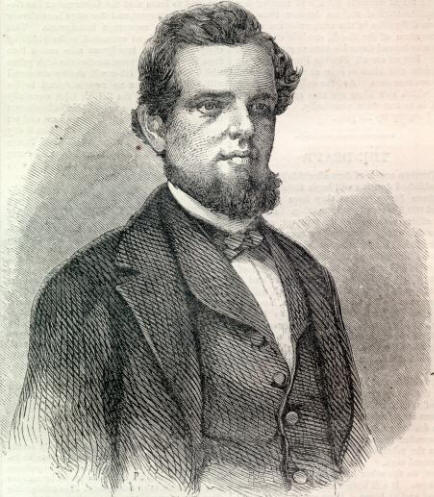 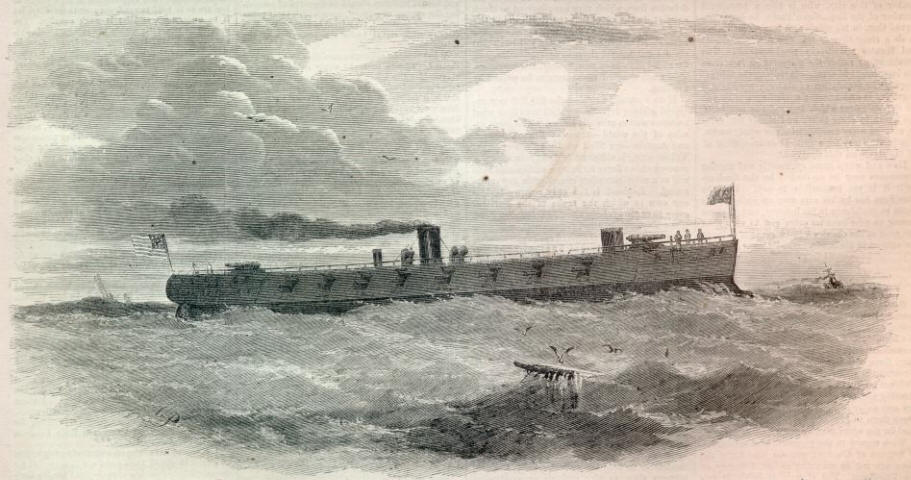 We acquired this leaf for the purpose of digitally preserving it for your research and enjoyment. If you would like to acquire the original 140+ year old Harper's Weekly leaf we used to create this page, it is available for a price of $165. Your purchase allows us to continue to archive more original material. For more information, contact paul@sonofthesouth.net |
||||||||||||||||||||||
|
|
||
|
|
Site Copyright 2003-2018 Son of the South. For Questions or comments about this collection, contact paul@sonofthesouth.net |
|
|
Are you Scared and Confused? Read My Snake Story, a story of hope and encouragement, to help you face your fears. |
||
